Browse all of the amazing artwork submitted to our competition and see the winners for each category!
1st place prizes in each category are sponsored by the Microbiology Society journal Access Microbiology.
We are delighted that the Microbiology Society has supported ART LAB!
Category: 2D Artwork
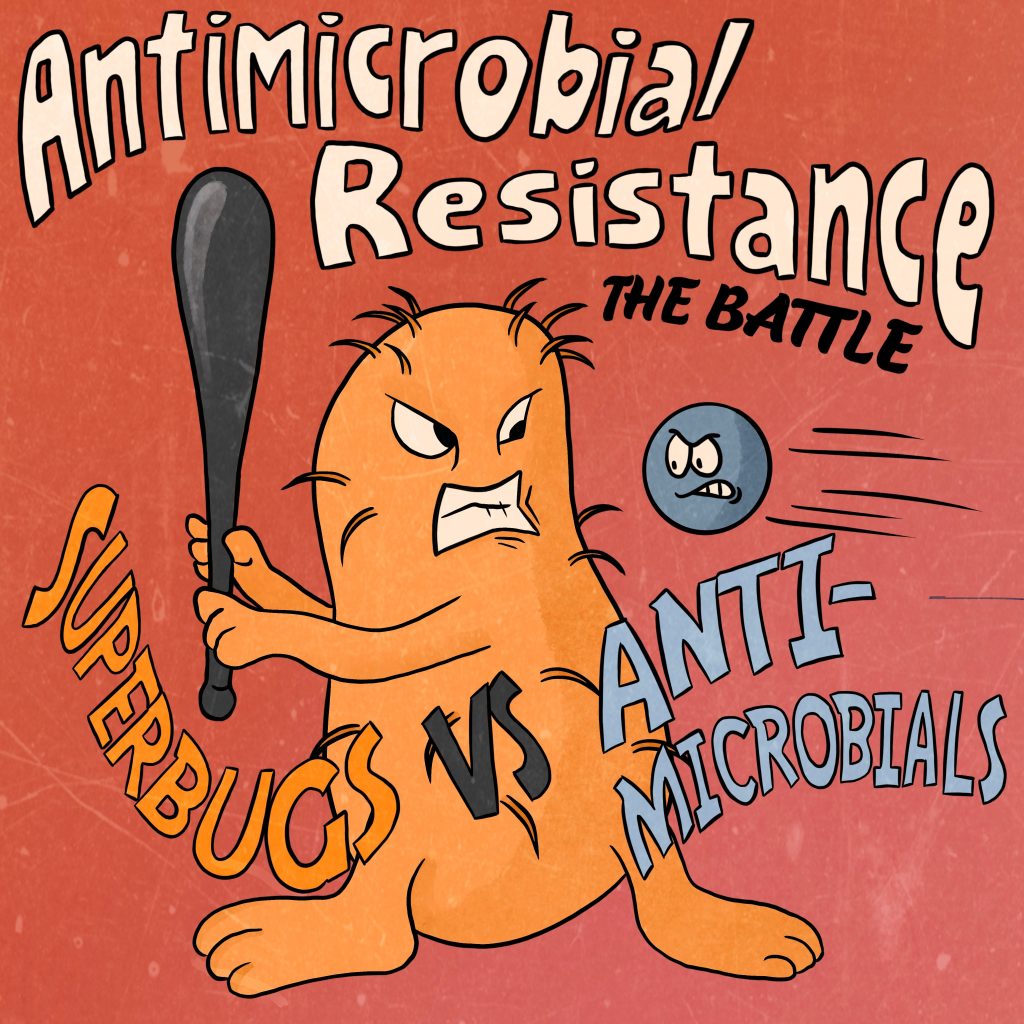
1st Prize
Isabelle Jarratt
‘Antimicrobial Resistance – The Battle’: Bright and bold cartoon illustration depicting the fight between Antimicrobials and Superbugs.
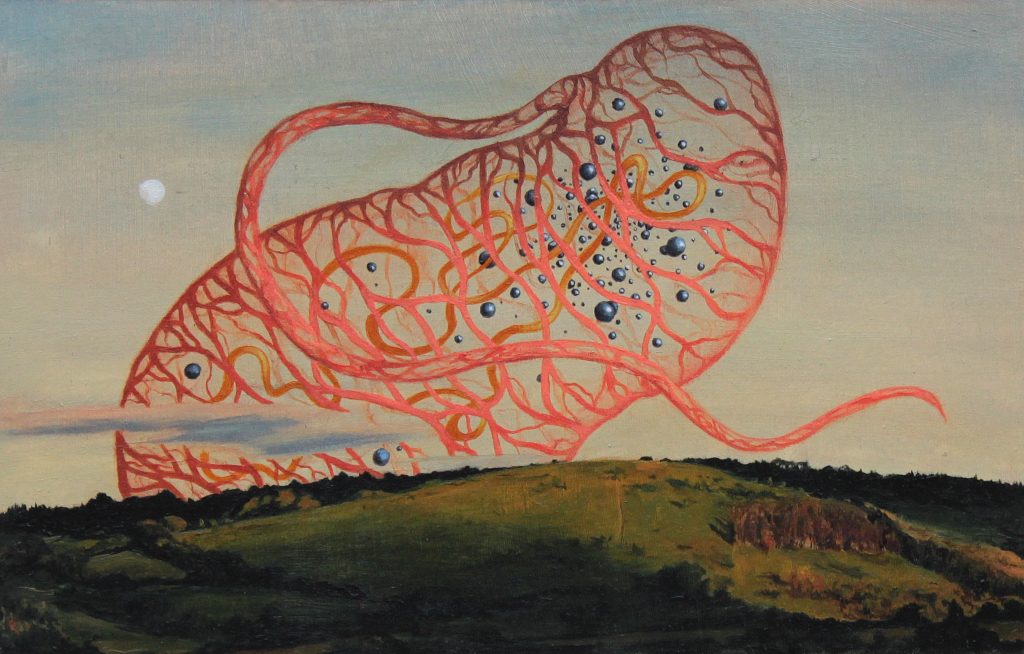
2nd Prize
Tessa Gray
‘We Are Small II’: This oil painting (22x15cm) is part of a series of works, started in 2018, depicting gigantic bacteria inhabiting our environment. After research into the symbiotic relationship we have with bacteria I was lead down many paths of discovery towards the understanding that they are one of the most ancient and fundamental lifeforms supporting all eco systems on our planet. By enlarging the bacteria like forms into a size that visibly shows their level of influence on our lives and environment I want to show a fuller picture of bacteria as both wonderful symbiotic creatures, and also potentially fearsome as AMR could become a catastrophic global health crises. The landscape of this painting are the hills between Caerphilly and Cardiff.
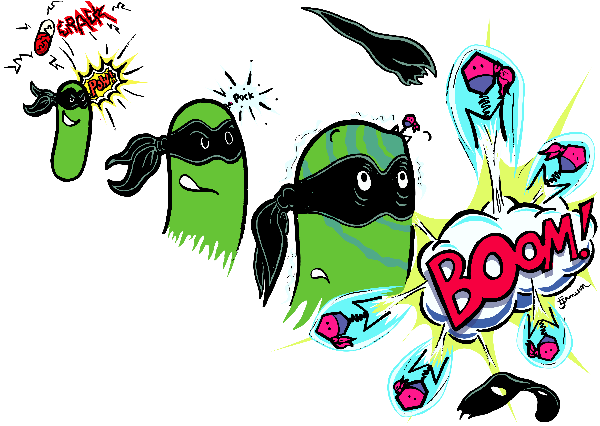
3rd Prize
Ellie Jameson
‘Bacteriophages – a new hero’: Bacteriophages are a new hero in the fight against superbugs. Antimicrobial resistant bacteria that can resist a wide range of antibiotics are often referred to as superbugs. These superbugs cause problematic infection, but are still susceptible to bacteriophages (phages). Phages are viruses that only infect bacteria and can be turned to our advantage in tackling superbugs. Superbugs cause problematic infections, which if left untreated can lead to sepsis and death. Phages have long been known to kill bacteria, but are often overlooked as they are very specific. Many scientists around the world are now collecting and investigating phages, which are now beginning to be used in the fight against antimicrobial resistant infections.
Other entries
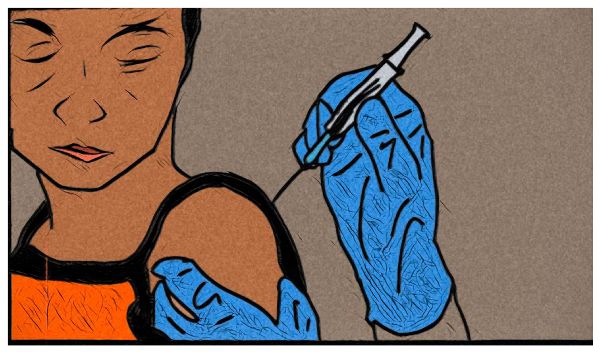
Moses Ojo
‘Being Safe’: It talks about how taking antibiotics or vaccines can help protect our body from germs, diseases and infections that tend bring in sicknesses and thereby weakening our immune system.

Lizah van der Aart
‘A Chink in the Armour’: The human gut is inhabited by an extremely high number of bacterial species, among which is Clostridium difficile. This microorganism is harmless in low numbers, but when the composition of bacterial species in the gut suddenly changes – by taking antibiotics for example – this organism can suddenly grow to unhealthy numbers. The human gut is like any other ecosystem on earth, it needs to be well-balanced. And when this balance is upset, it can have disastrous consequences. Clostridium difficile is very hard to combat because of its extremely strong outer layer, the S-layer. This illustration portrays it as strong, unbendable armour. Researchers from the Salgado lab in Newcastle Upon Tyne have recently discovered the exact structure of the S-layer.
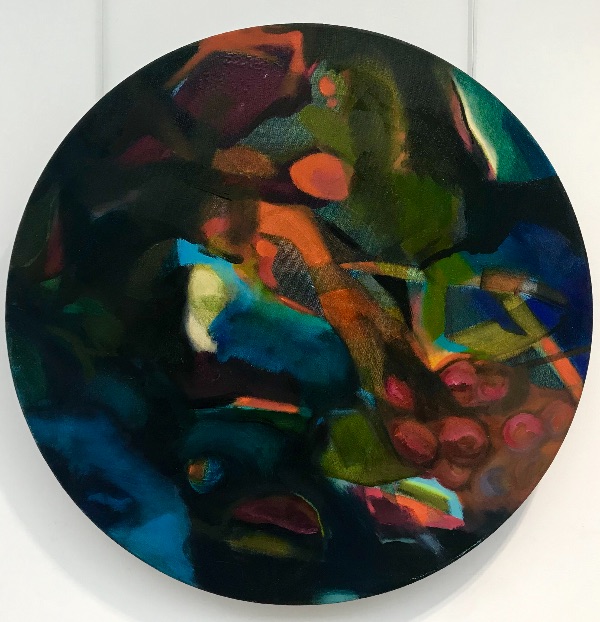
Melanie Wotton
‘Habitat #5’: My painting, Habitat #5 is an abstract petri- dish work, responding to the unknown habitats and niches where plants and associated fungi ecosystems may exist and are currently undiscovered and unknown. The ongoing destruction of the worlds fragile habits mean that the opportunity to discover organisms that may help us in our fight against drug- resistant bacteria is severely compromised.
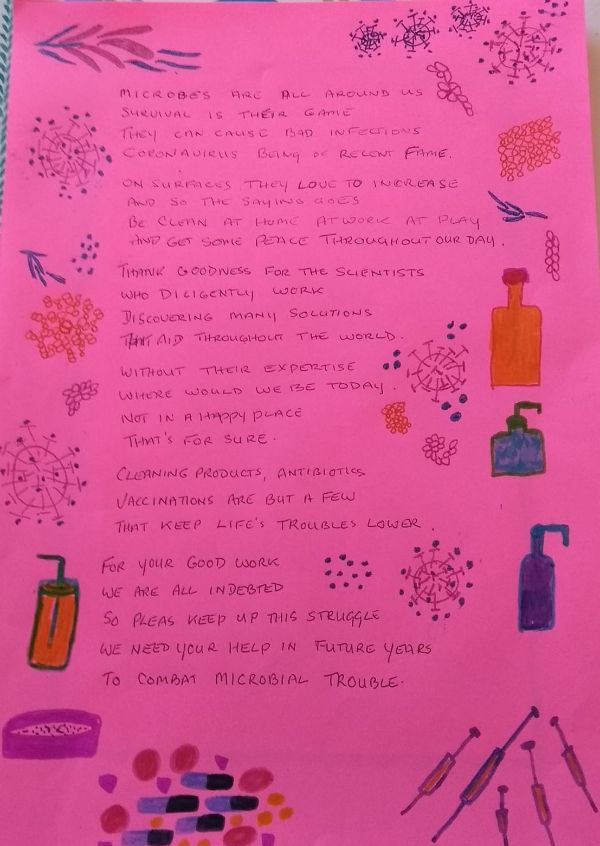
Patricia Foley
‘Survival is the game’: A poem about microbes and the future battle we will have with antimicrobial resistance.
Category: 3D Artwork
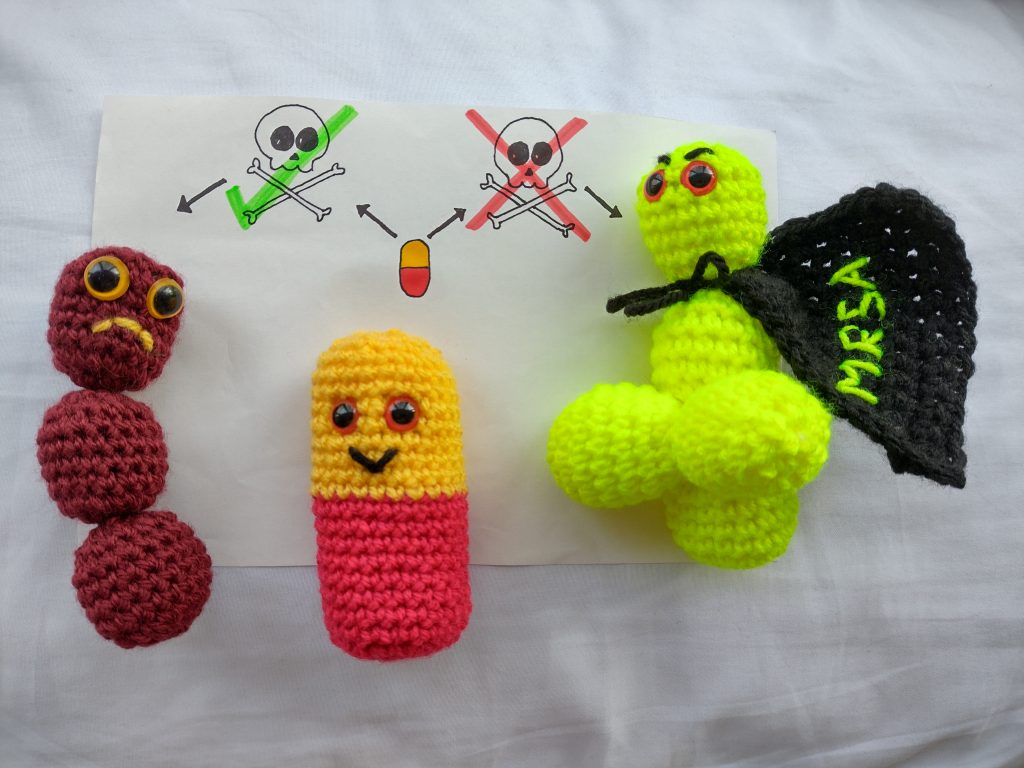
1st Prize
Vicky Hirst
‘Superhero v Superbug’: I have crocheted this piece to show the effectiveness of antibiotics on bacterial microbes. The bug on the left represents Streptococcus which can cause Tonsillitis. The pill in the middle is Amoxicillin (penicillin antibiotic). The bug on the right is MRSA, a superbug which is resistant to many antibiotics. Having suffered from Tonsillitis many times in my life, I’ve been extremely thankful that Penicillin has been effective in curing my infections. I am particularly concerned that antibiotics are being overused and over-prescribed, leading to their increasing ineffectiveness. The little red and yellow pill was my superhero growing up but unfortunately antimicrobial resistant ‘superbugs’ are threatening to take over!

2nd Prize
Adam Williams
‘Resistance is Coming’: My artwork is a clay pin that I made and have decorated to symbolise that time is running out on the effectiveness of our current antibiotics due to the threat of resistance. As grains of sand flow through an hourglass, the number of effective antibiotics is reducing.
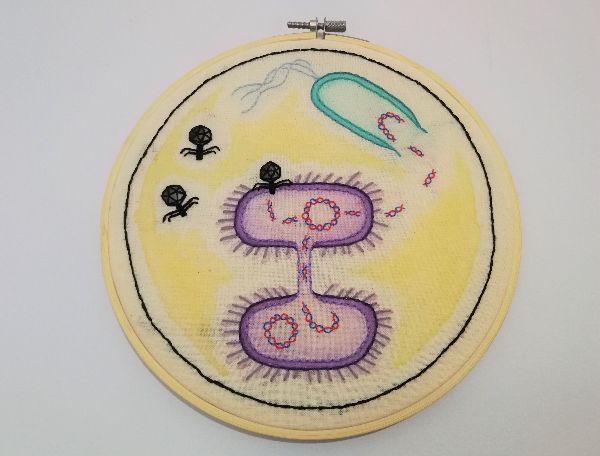
3rd Prize
Teresa Paradell Gil
‘Gene transfer – Antimicrobial resistance’: Watercolour and embroidery hoop. Mechanisms of gene transfer that can be responsible for the transmission of antimicrobial resistance. On the top left, we see a bacteriophage transferring DNA from one bacterium (not shown) to another. On the top right, bacterial transformation, where uptake of naked DNA from the environment occurs. Finally, at the bottom of the hoop, bacterial conjugation, where DNA is being transferred through direct contact from one bacteria to another. In the middle of the hoop, we can see the recipient bacteria for each of one of these examples.
Other entries
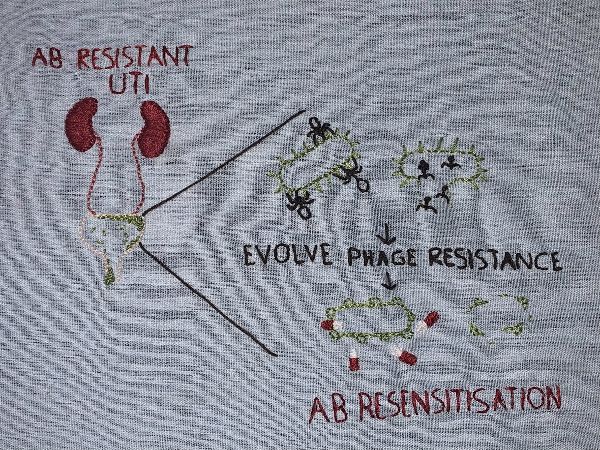
Libby Duignan
‘Antimicrobial resistant UTI microbes, re-sensitised by phage exposure and subsequent evolution’: Antimicrobial resistance in UTIs (urinary tract infections) is a huge problem, the use of phages as a therapy is now being trialled as an alternative. However, the bacteria can evolve phage resistance also, yet this evolution to resist killing by phages can be advantageous, as it can change the membrane permeability which in turn re-sensitises the bacteria to antibiotics, enabling antibiotics that the bacteria were resistant to, to be used post phage treatment to clear a UTI.
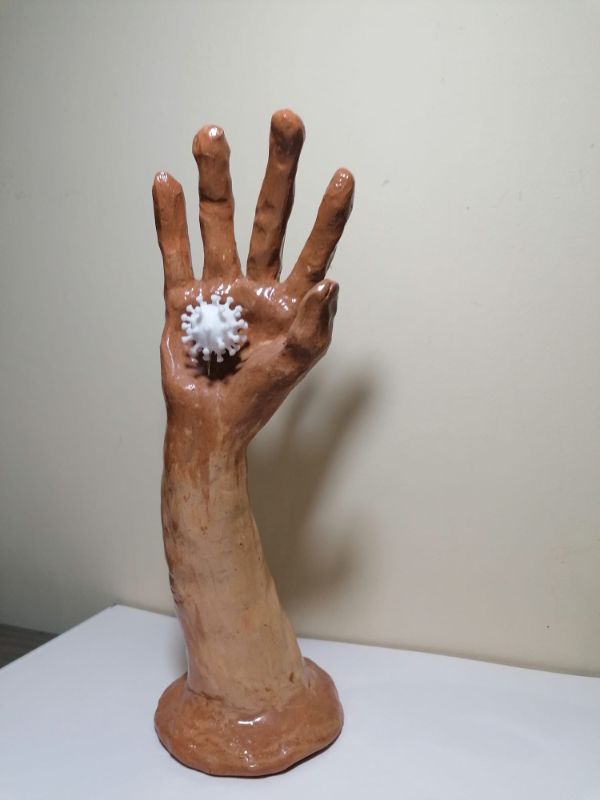
Martin Crack
‘Hand of Fate’: Glazed clay model hand with 3D printed virus model. 40 cm tall.
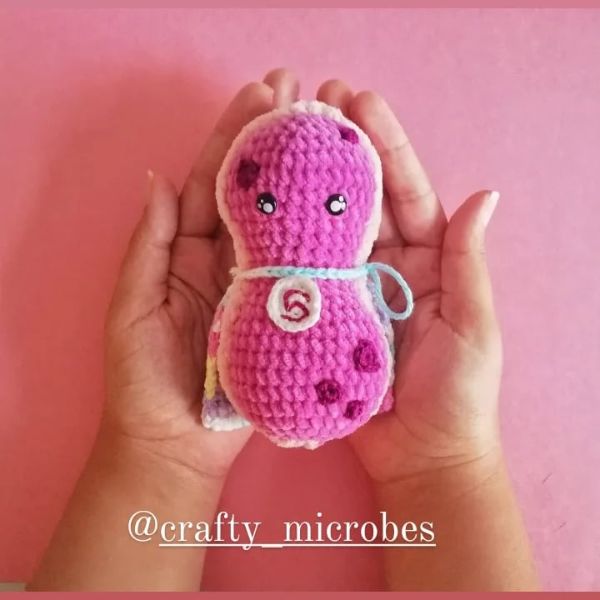
Denise Coutinho
‘Super hero Bacteria’: My artwork is a handmade crochet plushie bacteria. It is inspired by the kawaii art and it has a cape and a medallion to shoe that she can surpass the antibiotics all while being cute. All the details are either crocheted or embroidered.
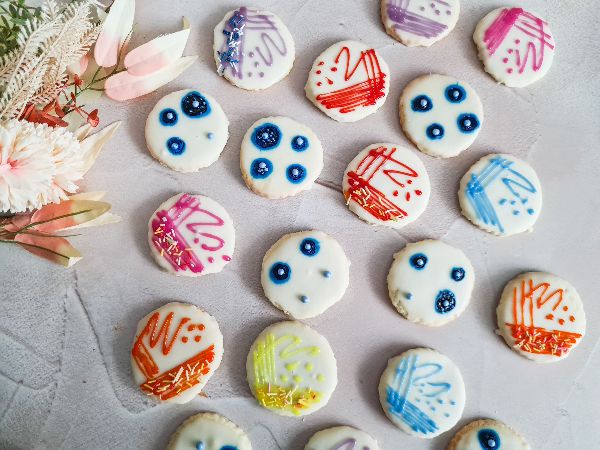
Kasia Parfitt
‘Microbial Iced Biscuits’: This is my own allergen-friendly recipe which depicts AMR. This is inspired by my PhD work using disc susceptibility assays to look at antibiotic resistance. Half of the iced biscuits are streak plates which show how bacteria are grown into single colonies for analysis. The other biscuits are antibiotic disc plates showing antimicrobial resistance/susceptibility. The blue circles show zones of clearing around the “disc” in the centre. Spontaneous resistant mutants are also shown by small confetti mix in the zones. I made this as a fun and very tasty way to understand how we test for antimicrobial susceptibility in the lab, suitable to understand for both kids and adults.

Cal Geen
‘Knitted antibiotics: A stitch in time saves nine’: We must act now to combat the spread of antibiotic resistance before the problem gets even worse.
Category: Photo/Video
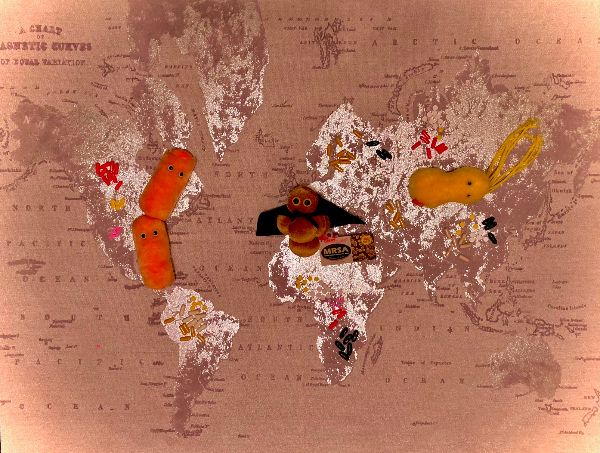
1st Prize
Adam
‘Around The World in MRSA’: A conceptual art piece highlighting the overuse of drugs throughout the globe resulting in continental sized populations of superbugs.
Category: Images of Research
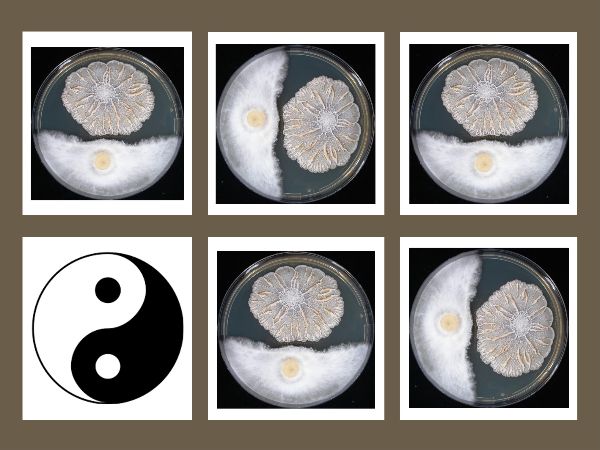
1st Prize
Eshwar Mahenthiralingam
‘Antimicrobial discovery and resistance: Yin Yang’: The microbiology image shows a bacterial colony fighting with a fungal colony (white and fluffy). The fungus has stopped growing because it has run into antibiotics the bacteria is secreting into the agar around it. Both microbes have reached a stale mate in their growth, and this balance is a natural example of Yin Yang. It is also symbolic of the fact that after the use of antibiotics, resistance naturally follows, and therefore we must use antibiotics carefully, and discover more ways to kill harmful microorganisms. Othman Boaishia, an ex-Cardiff University PhD student is acknowledged for generating the microbiological image, which has then been incorporated into the Yin Yang design.
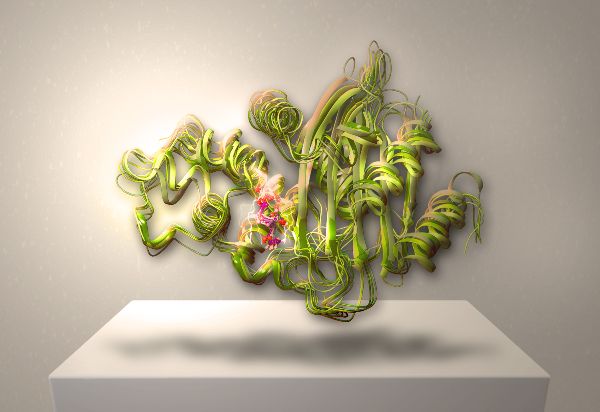
2nd Prize
Jaida Begum
‘Combatting Antimicrobial Resistance Using Computational Biochemistry’: Antibiotic resistance is mainly attributed to β-lactamase enzymes. One such example is KPC-2 (shown as pink/green ribbons) which break down β -lactam antibiotics. To combat this, β -lactamase inhibitors such as Avibactam (shown as purple/red ball and sticks) have been developed. Interestingly, Avibactam regenerates but how this occurs is unknown. To decipher this mechanism, we used computer simulations to predict the driving forces of Avibactam over time (there are five snapshots of the complex taken from the simulation as an example). Trying to understand how Avibactam inhibits KPC-2 and how it regenerates would provide vital clues to antibiotic resistance and thus aid in the design of new and more efficient β -lactamase inhibitors.
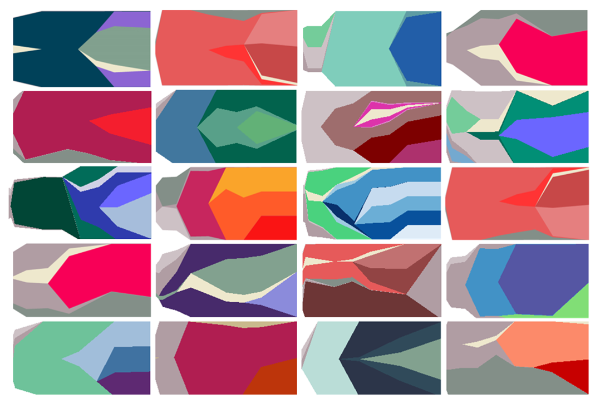
3rd Prize
Angharad Green
‘The Dynamics of Bacterial Evolution’: This science art is made up of a collection of graphs called Muller plots, which are used to visualise how bacteria evolve when grown in diverse environments. The colours represent genetic changes that have taken place in the presence of environmental factors, such as antimicrobials and the host immune system. The blocks of colour expand when the genetic changes make the bacteria better able to survive in their local conditions. The dynamics of evolution are complex and visualising this process enables scientists to better understand bacterial processes, including antimicrobial resistance.
Other entries
April Hayes
‘Beautiful Accident’: A video of a petri dish with bacterial colonies on. However, the plate, and colonies, are iridescent in the light, and you can see this in the movement of it in the video. This plate was meant to be able to be read, to provide data in my work investigating AMR in bacterial communities, however, due to the swarming of certain species in this community, it meant I was unable to read it, but it looked beautiful regardless.


